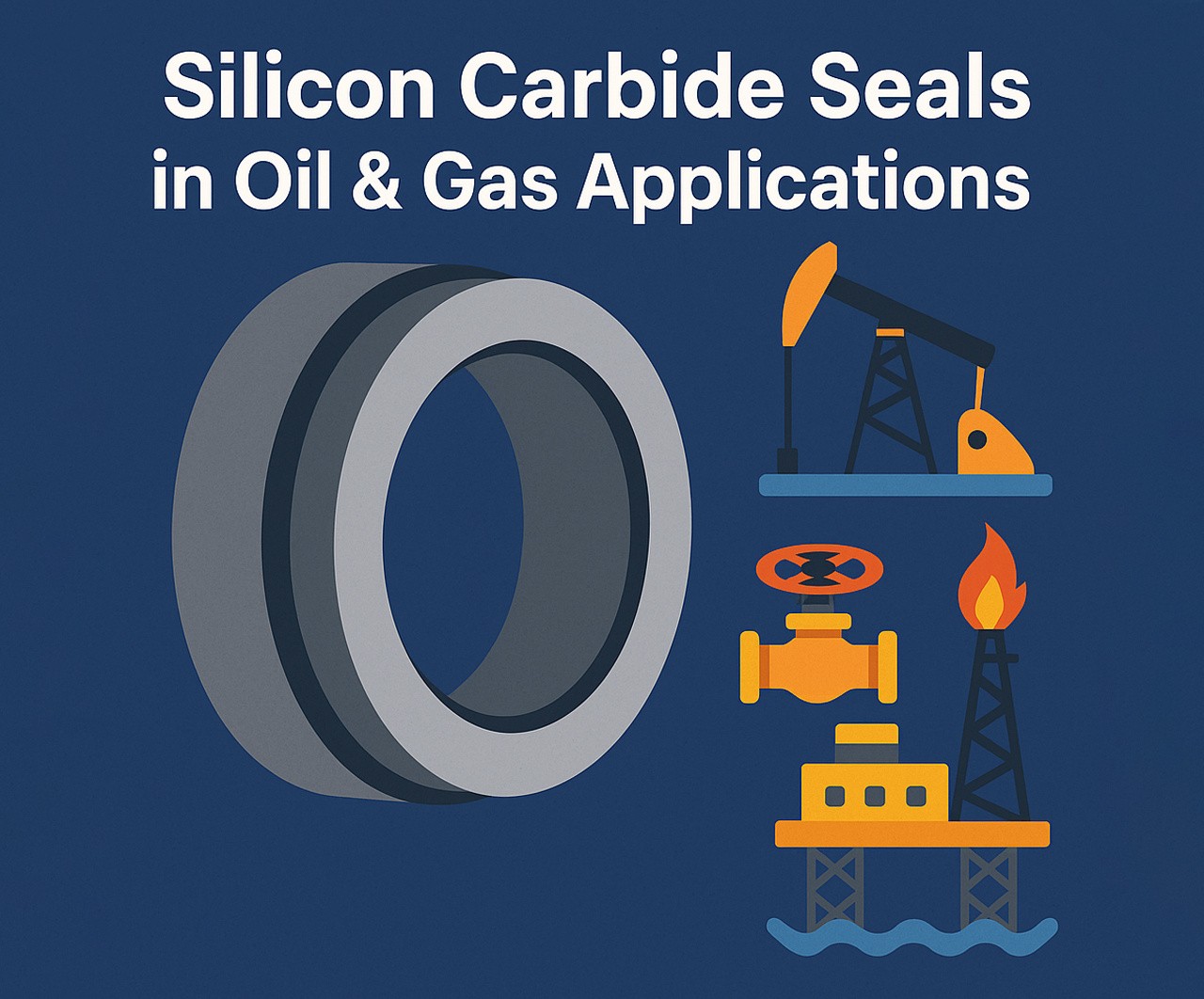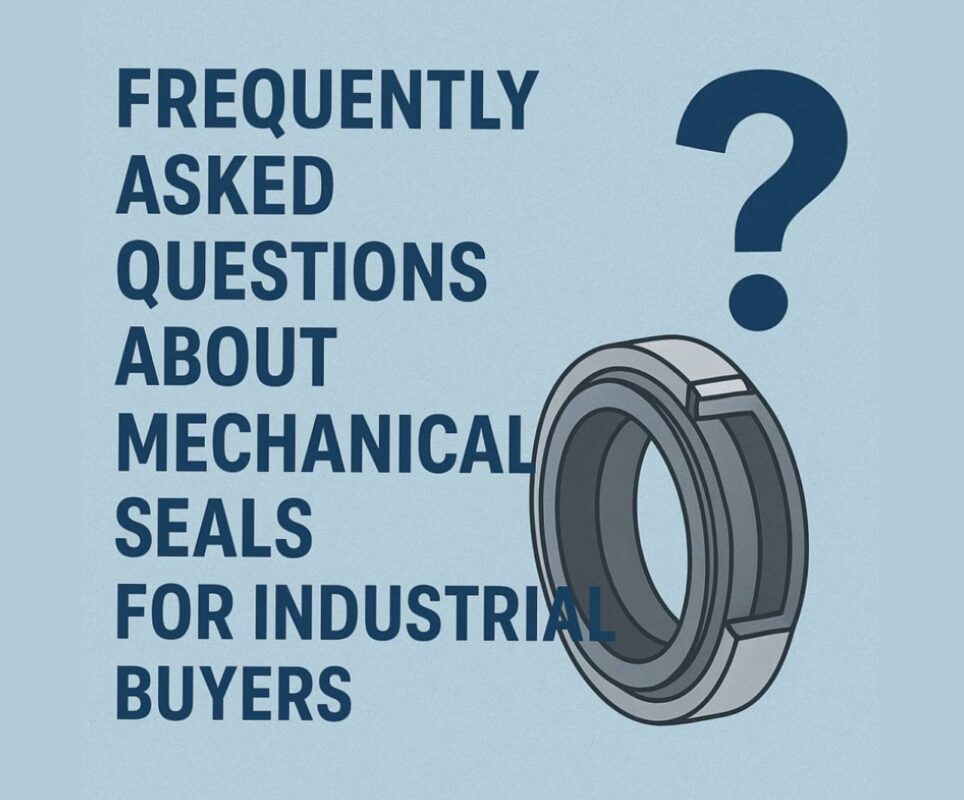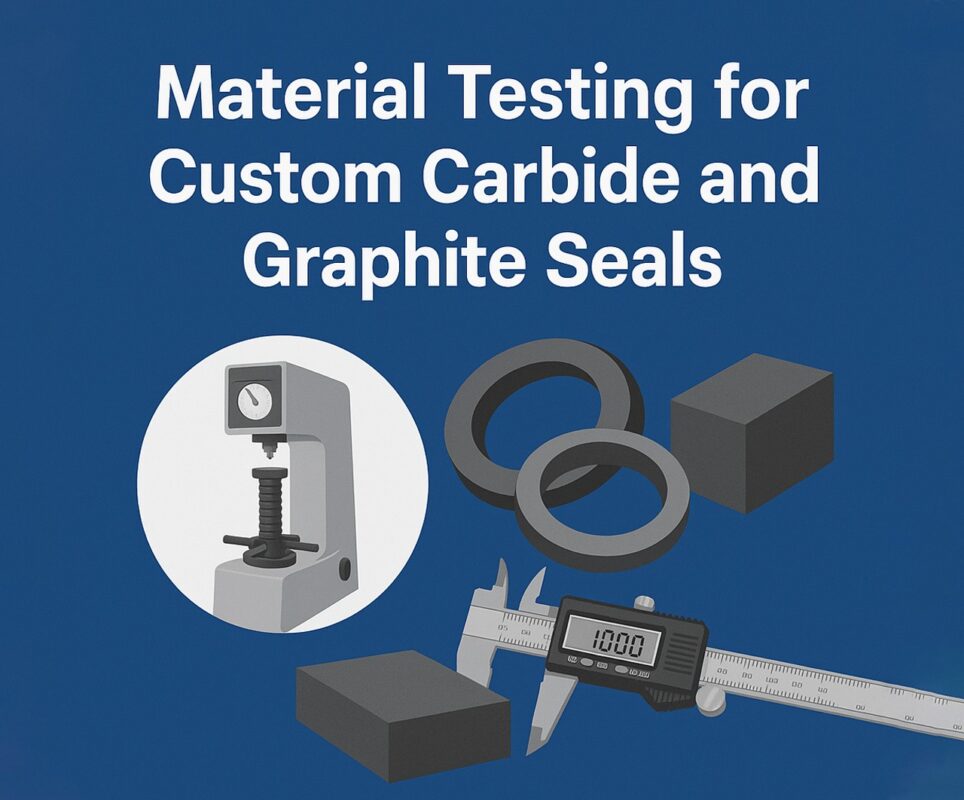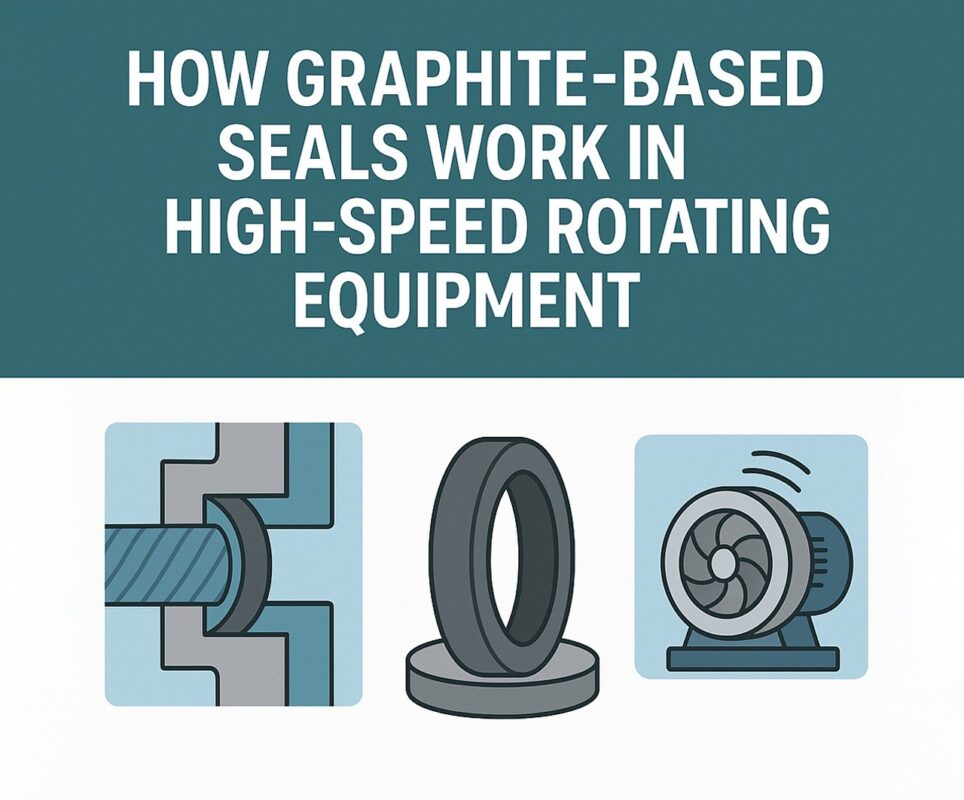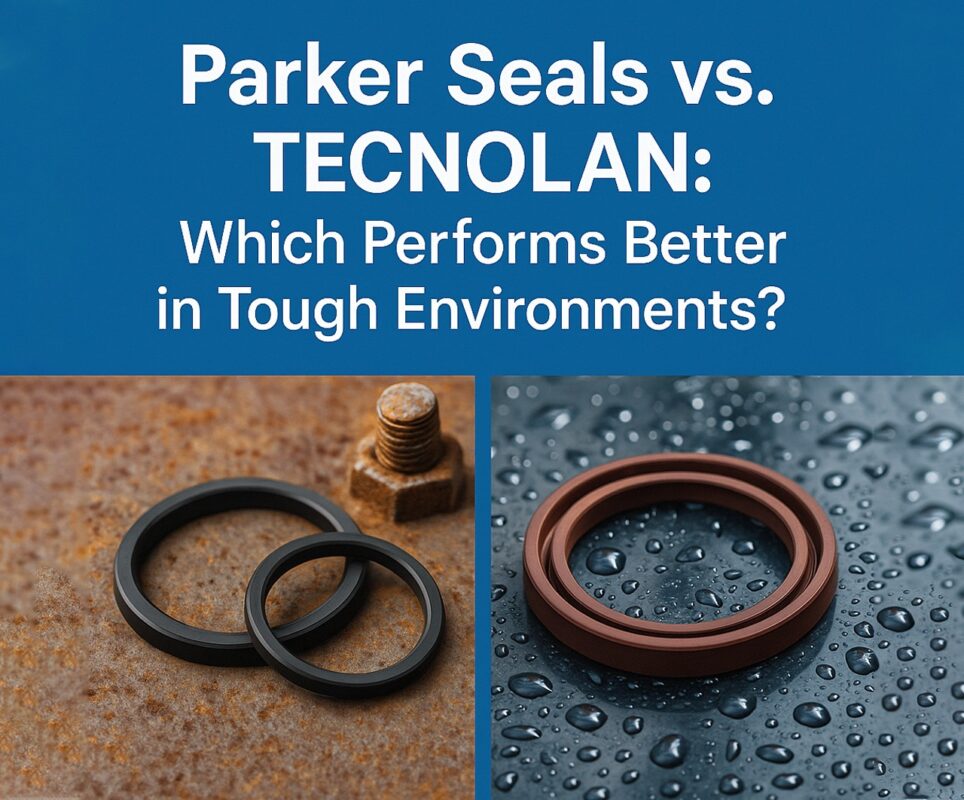In the high-pressure, high-temperature environments of oil and gas operations, durability and reliability aren’t just nice to have—they’re essential. Whether it’s downhole drilling, refining, or pipeline transport, sealing components face constant stress, abrasive media, and chemical exposure. That’s why industry leaders are shifting toward advanced materials like the silicon carbide mechanical seal, the versatile silicon carbide seal, and in many cases, comparing them with the traditional tungsten carbide mechanical seal to select the best fit for mission-critical tasks.
This article explores why silicon carbide seals are fast becoming the standard in oil and gas operations, how they compare to tungsten carbide options, and what engineers should consider when specifying mechanical seals for aggressive service conditions. Know more..
Why Seal Material Matters in Oil & Gas
Mechanical seals serve one primary function: preventing leakage of hazardous fluids while allowing rotating components to function without interruption. In oil and gas, where fluids can be hot, corrosive, or laden with solids, standard seal materials like carbon graphite or stainless steel often fall short.
That’s where the silicon carbide mechanical seal shines. Made from sintered or reaction-bonded silicon carbide, this material offers:
- Superior hardness and wear resistance
- Excellent thermal conductivity
- High chemical resistance
- Dimensional stability under extreme pressure
Compared to metals and resins, the silicon carbide seal can maintain a longer service life and minimize downtime—a crucial advantage in high-stakes oil and gas environments.
What Is a Silicon Carbide Mechanical Seal?
A silicon carbide mechanical seal is a rotating or stationary seal face composed of silicon carbide—a ceramic material formed from silicon and carbon. It’s one of the hardest materials used in mechanical seal manufacturing, with hardness ratings just below that of diamond.
There are two main types:
- Reaction-bonded silicon carbide (RB SiC): Contains free silicon, offering improved corrosion resistance and higher density.
- Sintered silicon carbide (SSiC): Pure form with no free silicon; best for chemically aggressive fluids.
A silicon carbide seal face is often paired with a secondary material like carbon, tungsten carbide, or another silicon carbide face in a dual-face design.
Why Silicon Carbide Works for Oil & Gas
The oil and gas industry presents some of the harshest conditions for rotating equipment seals, including:
- High RPMs and extreme pressure differentials
- Hydrocarbon exposure
- Abrasive slurries and particulates
- Rapid temperature changes
- Long operation cycles without maintenance windows
A silicon carbide mechanical seal handles these challenges by resisting wear, transferring heat away from the seal face, and maintaining structural integrity even when lubrication fails.
Key Benefits:
- Excellent performance in dry-running scenarios
- Resistance to acids, alkalis, and hydrocarbon fuels
- Prevents thermal shock cracking
- Reduces equipment failure risks and unplanned shutdowns
Comparing Silicon Carbide vs. Tungsten Carbide Mechanical Seal
The tungsten carbide mechanical seal has long been the go-to for robust sealing, especially in wear-heavy environments like slurry pumps and drilling mud systems. However, engineers are increasingly weighing the pros and cons of each material.
| Property | Silicon Carbide Mechanical Seal | Tungsten Carbide Mechanical Seal |
| Hardness | Higher | Slightly lower |
| Density | Lower (lighter) | Higher (heavier) |
| Thermal Conductivity | Excellent | Good |
| Chemical Resistance | Excellent | Moderate |
| Shock Resistance | Moderate | Higher |
| Best Use | Chemical/thermal applications | Abrasive/mechanical applications |
Takeaway:
Use silicon carbide seal materials in chemical-rich or temperature-volatile environments. Choose tungsten carbide mechanical seal options when mechanical abrasion and impact resistance are the primary concerns.
Where Silicon Carbide Seals Are Used in Oil & Gas
1. Downhole Drilling Tools
Seals in mud motors, rotary steerable systems, and drill bits must withstand high-pressure, high-temperature (HPHT) environments. The silicon carbide mechanical seal resists erosion from abrasive drilling fluids and shock from bit vibration.
2. Pipeline Pumps
Crude oil and refined products must be pumped over long distances. Seal faces made from silicon carbide seal components handle the continuous stress of fast-spinning shafts and aggressive chemicals.
3. Offshore Platforms
In floating production and storage systems (FPSOs) or subsea pumps, space for maintenance is limited. Silicon carbide mechanical seals reduce the frequency of seal replacement due to their longevity in saltwater and oil-rich conditions.
4. Refineries
Processes like hydrocracking and alkylation involve corrosive media and high heat. Silicon carbide seals stay dimensionally stable and resist chemical degradation far longer than metal-based options.
Challenges and Considerations
While the benefits are clear, choosing and installing a silicon carbide mechanical seal comes with its own set of considerations:
1. Brittle Fracture Risk
Silicon carbide is hard but brittle. Improper installation or sudden impact can cause cracking. Always handle with care during assembly.
2. Higher Initial Cost
Compared to a tungsten carbide mechanical seal, silicon carbide versions are often more expensive up front—but this is usually offset by their longer service life.
3. Surface Finish Requirements
A smooth mating surface is critical. Lapped finishes (1-2 Ra µin) are required for optimal sealing performance.
The Role of Seal Face Pairing
A silicon carbide seal is typically used as one of two faces in a mechanical seal pair. Common pairings include:
- Silicon carbide vs. carbon: Lower friction, suitable for clean liquids
- Silicon carbide vs. silicon carbide: Excellent for chemically aggressive and abrasive fluids
- Silicon carbide vs. tungsten carbide: Blends chemical resistance with mechanical toughness
Understanding your fluid type, system pressure, and temperature range will help determine the best pairing for your application.
Best Practices for Silicon Carbide Seal Installation
- Clean all surfaces thoroughly—any debris can cause misalignment or damage during startup.
- Use proper alignment tools—misaligned shafts lead to uneven wear.
- Apply even torque during assembly—avoid pressure points on brittle seal faces.
- Use compatible lubricants—some fluids may react with certain silicon carbide grades.
- Pre-condition seals during commissioning—run the system slowly before ramping to full speed.
If you’re moving from a tungsten carbide mechanical seal to a silicon carbide seal, review all support components for compatibility—especially lubricants and gland plate tolerances.
Innovation in Silicon Carbide Sealing
Leading manufacturers are now engineering advanced silicon carbide mechanical seal products with features such as:
- Diamond-like carbon (DLC) coatings for reduced friction
- Porous silicon carbide faces for dry-lubricating effects
- Embedded sensors to monitor face wear and temperature in real-time
- Modular cartridge designs to simplify replacement in the field
These innovations are helping reduce downtime and optimize performance in oil and gas environments where every minute—and every drop of fluid—counts.
Final Thoughts
For engineers and maintenance professionals in oil and gas, the message is clear: when sealing performance determines operational continuity, upgrading to a silicon carbide mechanical seal can be the smartest move you make. While tungsten carbide mechanical seal options still have their place in abrasive, impact-heavy settings, the silicon carbide seal excels in harsh chemical, high-pressure, and temperature-variable environments.
Understanding the strengths of each material—and the needs of your specific application—will guide smarter decisions and more reliable outcomes in one of the world’s toughest industries.

